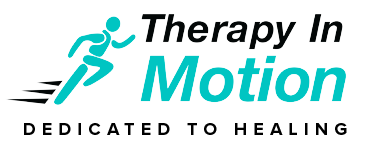Kathryn Dale, PT, OCS, SCS, FAAOMPT
Multiple sclerosis (MS) is a disease that affects the nerves in the body. Nerves are the structures that communicate signals from the brain to the body and allow us all to think, move, and even breathe. MS involves the loss of myelin, a material that covers and protects the nerves in the body’s central nervous system. Without this myelin, nerves cannot properly communicate with each other. MS symptoms vary from person-to- person, depending on what part of the nervous system is affected. Often, one of the first signs of MS is a change in vision, such as blurry or double vision. Nearly all persons with MS also report difficulty walking and difficulty with other functional movements such as getting out of a chair. This disease may be diagnosed with an MRI, once similar conditions have been ruled out. The cause of MS is unknown, but may be linked to genetics, viral or environmental factors.
Common Symptoms, Impairments and/or Functional Limitations:
Multiple sclerosis can affect structures that control movement, sensation, and/or mental and emotional processes and persons with MS may experience any of the following changes:
- Visual changes, such as blurry vision, double vision, or difficulty controlling eye movements
- Pain or sensation changes such as numbness, tingling, burning, or “pins and needles” in the trunk, arms or legs
- Dizziness or vertigo
- Balance problems or difficulty walking
- Arm or leg stiffness or muscle spasms
- Bowel or bladder problems
- Fatigue that does not improve with rest
- Emotional changes such as mood swings, depression or apathy Difficulty with clear thinking or memory
How can Physical Therapy or Occupational Therapy help?
Research has shown that starting physical therapy or occupational therapy right away can help the person in the early stages of MS adjust to changes in fatigue levels, balance, walking and coordination. The physical therapist does this in a number of ways:
- Overall strengthening to include the arms, legs and core. This will assist in walking, activities of daily living and challenges with fatigue.
- Endurance exercise such as a treadmill, stationary bike, rowing machine or elliptical trainer to improve breathing, mood and fatigue levels.
- Aquatic therapy for ease of movement and gentle resistance.
- Tai Chi or yoga to improve balance, flexibility, mood and focus.
- Occupational therapy to enhance fine motor skills and assist with activities of daily living.
The therapist will evaluate the physical capabilities of the person with multiple sclerosis and collaborate on specific goals and activities unique to that individual.
References:
- Corvillo I, Varela E, Armijo F, Alvarez-Badillo A, Armijo O, Maraver F. Efficacy of aquatic therapy for multiple sclerosis: a systematic review. Eur J Phys Rehabil. 2017 Dec;53 (6): 944-952.
- Heine M, van de Port I, Rietberg MB, van Wegen EE, Kwakkel G. Exercise therapy for fatigue in multiple sclerosis. Cochrane Database Syst Rev. 2015 Sep 11;(9): CD009956
- Kubsik-Gidlewska AM, Klimkiewicz P, Klimkiewicz R, Janczewska K, Woldańska-Okońska M. Rehabilitation in multiple sclerosis. Adv Clin Exp Med. 2017 Jul;26 (4): 709-715.
- Hauser SL, Cree BAC. Treatment of multiple sclerosis: a review. Am J Med. 2020 Dec;133 (12): 1380- 1390.
- Dalgas U. Exercise therapy in multiple sclerosis and its effect on function and the brain. Neurodeger Dis Manag. 2017 Nov;7(6s): 35-40.
